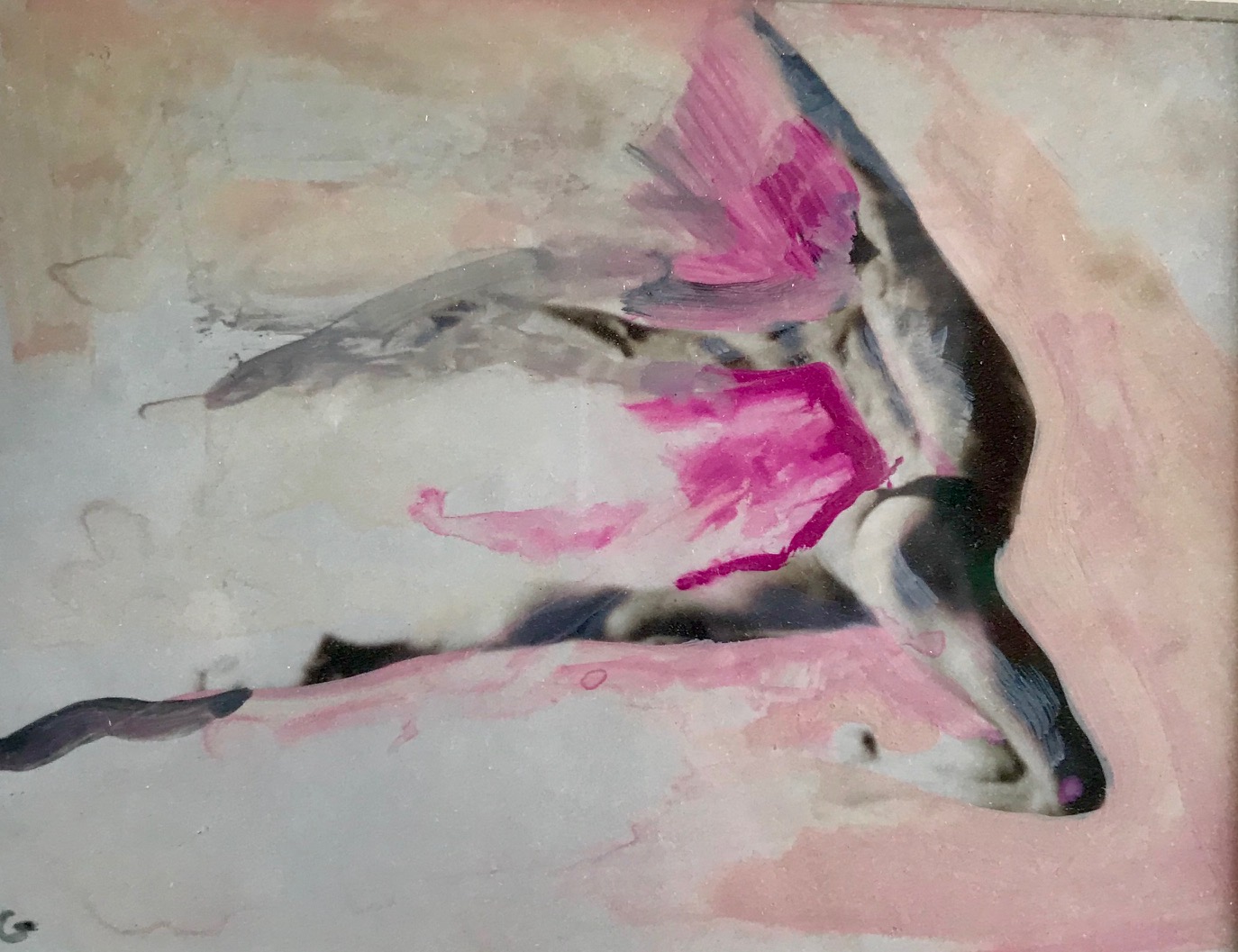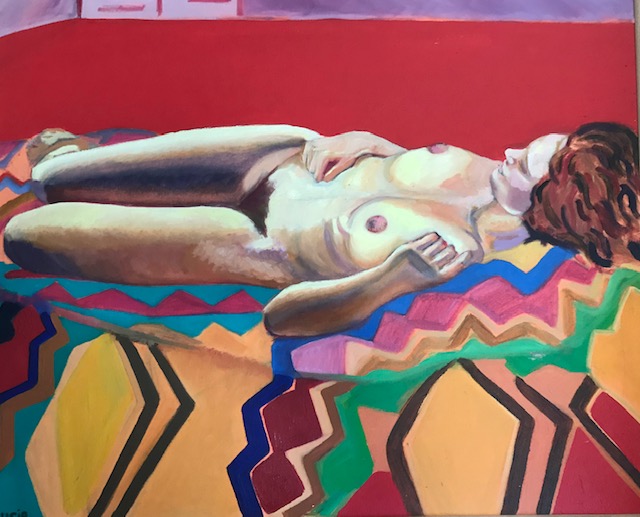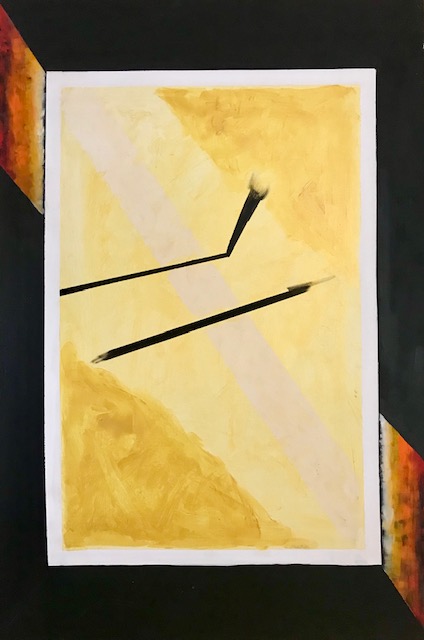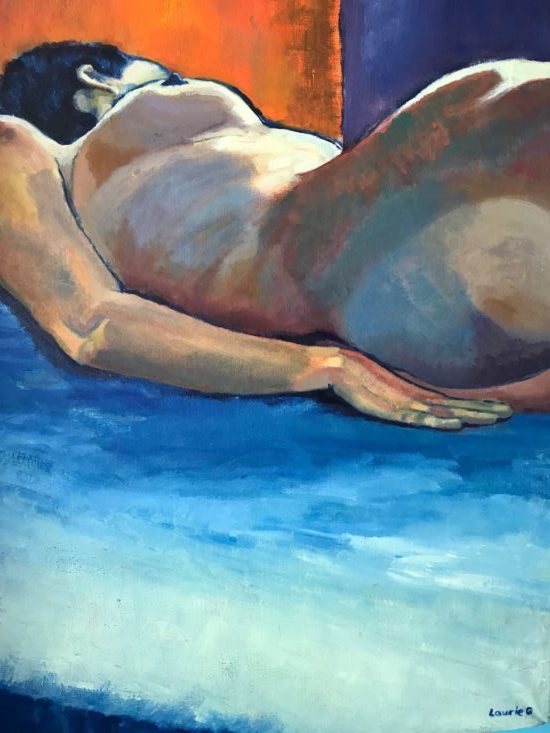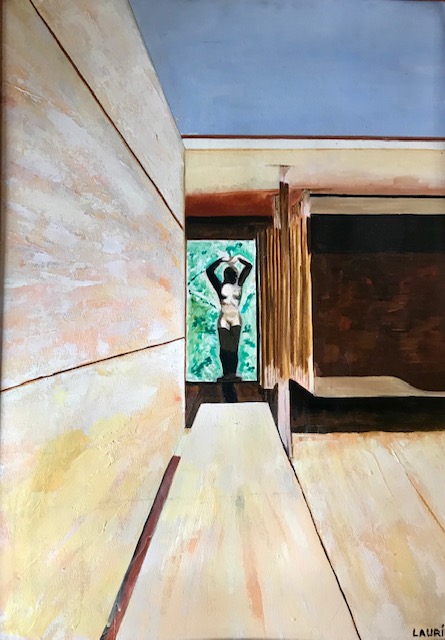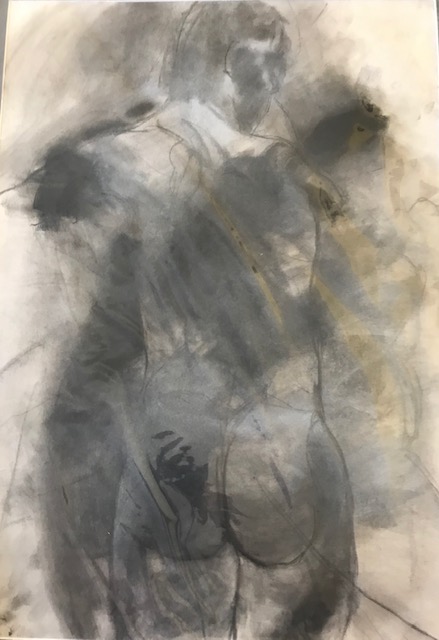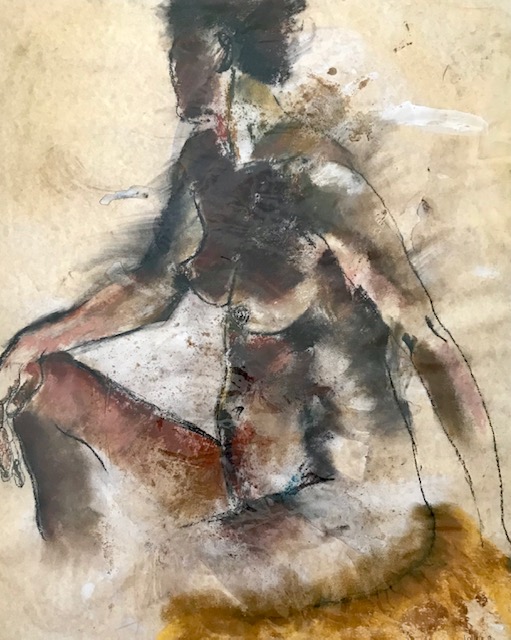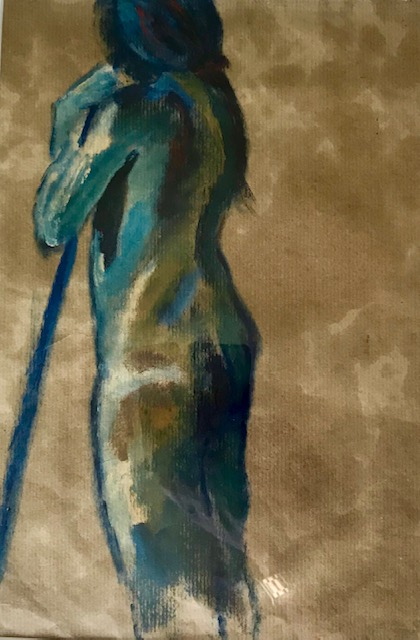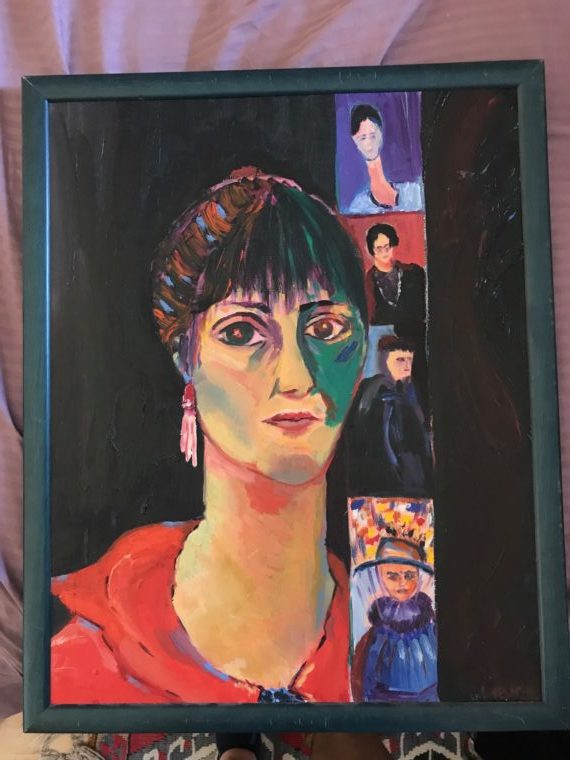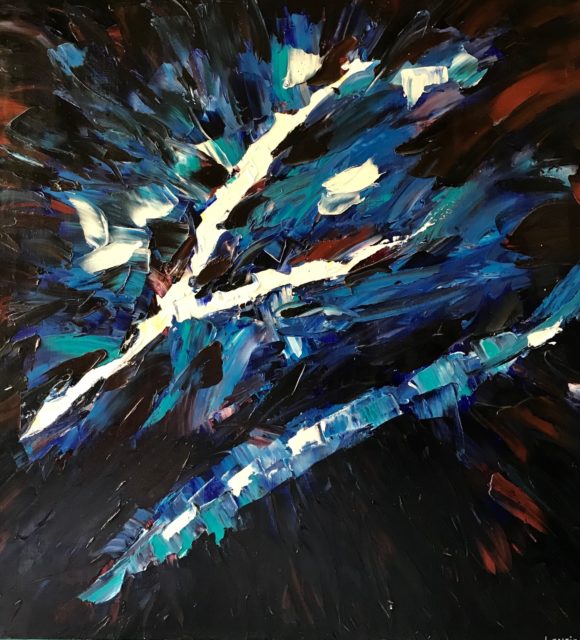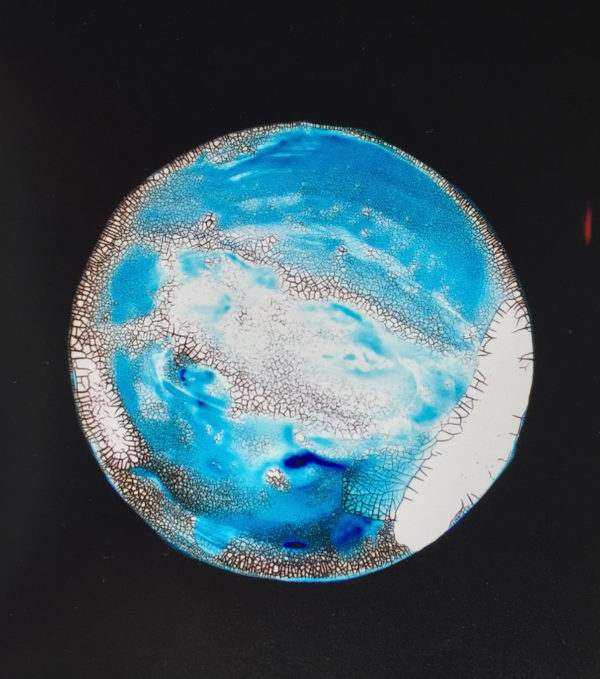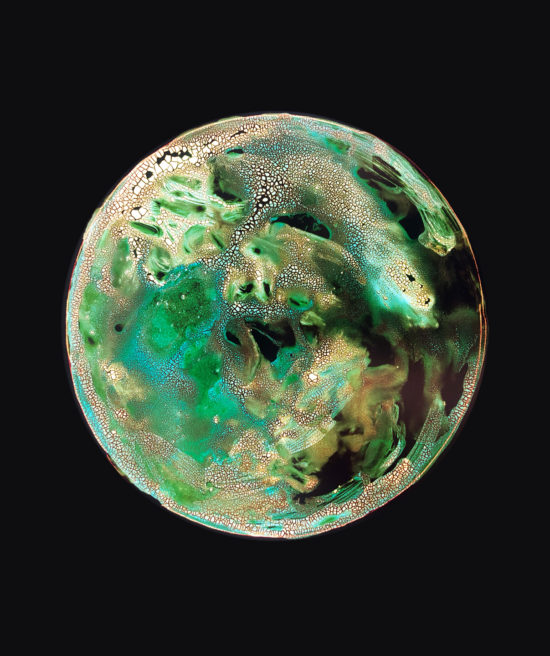Where Dance Meets Painting…
Former ballerina, Laurie Gabay is now a lecturer at University College London. She teaches French for Art Historians. Her great passions are dance and painting.
When did you start painting?
Laurie Gabay: Probably about 25 to 30 years ago. I started quite late in fact.
What made you paint?
Meeting my mentor was a trigger. His name was Geoff (he is dead now). During a weekend workshop on photography and watercolour, I met this artist and teacher who told me that I had a good flair for colour and that I should exploit it further. I had to learn the skills in order to develop this ‘talent’/flair. He suggested that I come to his college one full day a week to paint and study with him. This is what I did for 5 consecutive years. He taught me everything I know today. He taught me to look.
In some of your paintings, we can guess dance steps. Could you please tell us more?
Yes, because it is part of who I am and part of my identity. As I have been a dancer of ballet, contemporary dance, jazz since the age of 5, these disciplines have been part of my life and my vision. Everything I see and look at in the world, as an observer, is through the eyes of dance and movement. All elements of nature, whether sea, mountains, green, human beings, animals, even objects in space move within the same concept.
Many professional dancers have said dance too often takes a toll on their body. Do you regret having practised it?
No, absolutely not, even if it has cost me a huge amount! Dance requires a huge amount of discipline, self-discipline. It demands a lot of the body, the soul and teaches disciplines which are useful for life (stand tall, hold your head high…).
Dance also gives a musical sense, teaches you rhythm, inspires and only exists alongside music. It is the perfect harmony. But it comes at a cost, because it develops an athlete’s body with disastrous consequences for joints, feet… But passion always comes with a cost and it is worth it.
Do you use photographs for your paintings of dancers, or do you paint dancers as they dance, in the studio or in live performance?
Yes, I use photographs of dancers, pictures, things I see when I go to exhibitions and dance shows as a departure point to begin a painting and yes, I sometimes go into dance studios and sketch very rapidly and observe.
Which artists influenced your work?
Many, the list is very long and it changes with what one experiences. I love Kees Van Dongen, his fluid shapes, his eccentricity and bold colours, Toulouse Lautrec, his drawings are sublime, Soutine, Lee Krasner, Nicolas de Stael…
Has London influenced your style?
Yes absolutely. I think that London has allowed me to fly and to express myself with a lot more freedom. The UK is open to any form of Art and even if the difficulties are the same everywhere, there is a certain freedom here despite a very high artistic demand. And this is also what I like. An underlying demand underpinning high freedom of expression. I have tried and still explore new techniques, new mediums and the journey is ongoing, changing constantly, questioning what I am doing and where the work is leading me. The help and contribution of my peers is also important and inspiring.
People love your drawings too. Would you say that drawing is more difficult than painting because it requires more precision and details with shapes?
They are two different techniques with slightly different approaches. Drawing is the base of something that starts in the head; you study, transform, remove, add on paper; there is something quite fragile with drawing whether it be pencil, charcoal or pastel. I prefer to draw with the more freeing mediums such as pastel or charcoal. There is something very physical with paper. There is also the way drawing brings to mind calligraphy (holding a pencil between two fingers for example) whereas painting is with brushes, fingers... Having said that, one can draw with paint also… haha, this is a never ending discussion.
Which of your paintings is your favourite, the painting that you wouldn’t sell for anything in the world? Why?
The male dancer’s flight. Gouache on print. It is tiny but I love it because it was something very instinctive and spontaneous. The result actually surprised me. It is very difficult to sell ones work because you sever yourself from your own children in a way.
Could you explain your self-portrait? How do you perceive yourself?
We are told that it is a very good exercise to do a self portrait often. I have done lots and I have thrown them away. Rembrandt painted hundreds of self portraits. My face seems to have soft features but because I tend to be on the anxious side, I think that my eyes are inquisitive towards the person who is looking at me.
Your self-portrait looks like the portrait of the Empress Josephine, the great love of Napoleon. Are you her descendant or incarnation?
Wow, I am very flattered! I would have liked to be her incarnation because she had such a fascinating life. No, I do not have any family link with her.
Do you sometimes use another artistic way to communicate, such as sculpture?
No, I have never been drawn to sculpture. I like photography a lot and I use photos with my paintings. I must say that since the beginning, it is always painting which has fascinated me and where my passion lies.
form-idea.com London, 25th September 2019. Interviewed by Pierre Scordia and Annie Clein.
Please click here to read this interview in French
Laurie's website: Laurie Gabay Art
